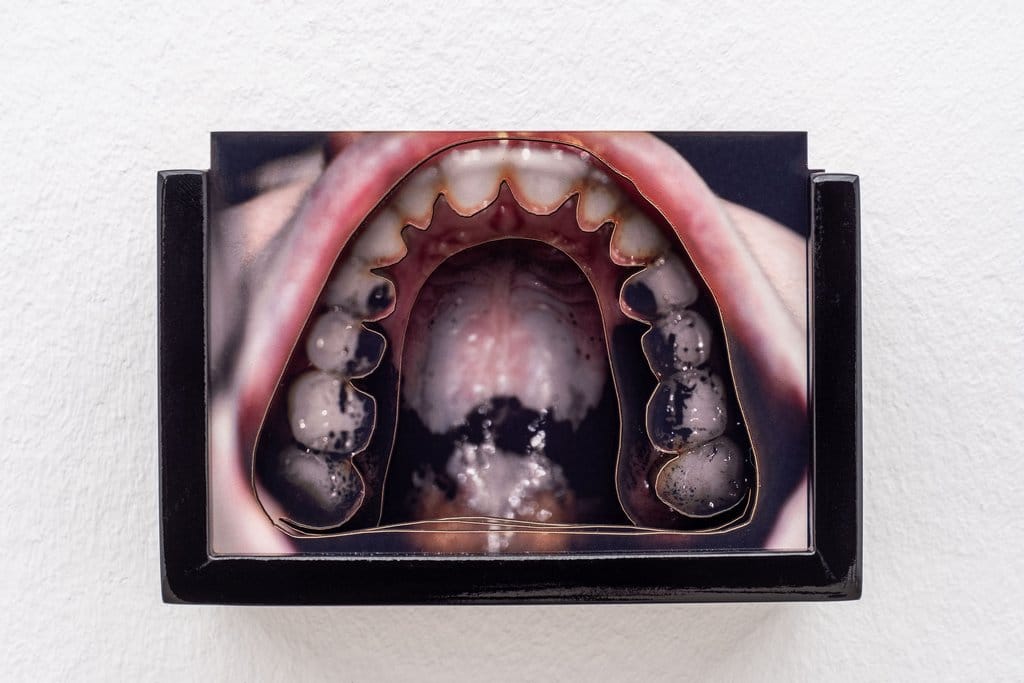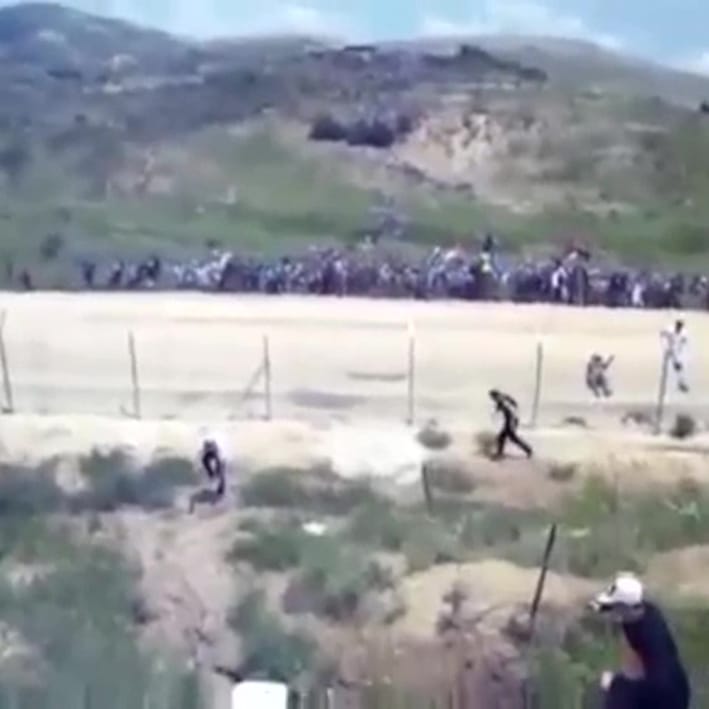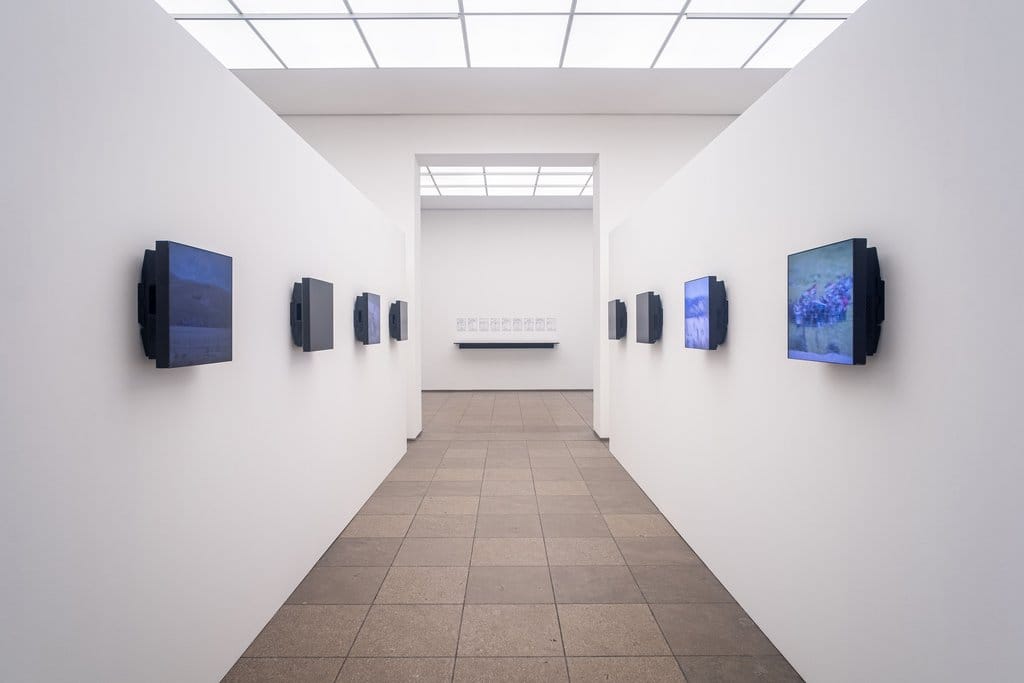Lawrence Abu Hamdan Knits Language to Power
The Voice Before the Law explores the ways in which linguistic uses and misuses are bound to legal systems.

BERLIN — Centering sound and language, Lawrence Abu Hamdan’s compact exhibition at Hamburger Bahnhof is spread through two rooms, linked by a narrow, constructed hallway. Visitors to The Voice Before the Law are left to flow from the show’s start to end like sound waves in an ear canal.
Abu Hamdan demonstrates the crucial, yet nebulous, semiotic net which knits language to systems of power, focusing on topics from the “shouting hill,” — a borderland in Israeli-occupied territory with unique acoustics, where divided families use their reverberating voices to communicate — to the system used by border patrol agents to determine refugee status based on the minuscule particularities of accents. Through video, diagram, text, and photography, Abu Hamdan explores the ways in which words, sounds, and accents are bound to nationhood, identity, and borders; linguistic uses and misuses to legal systems; misunderstanding to bodily harm.

These final two concepts are mostly successfully explored via “Disputed Utterance” (2019), on view in the first room. Consisting of seven pairs of laser-cut color, life-size photographs of the insides of peoples’ mouths, the work is presented in a staggered display. Surrounded by pristine white walls, the cluster of small images, contrasted with emptiness, echoes visually off of the blank space which enfolds them. Each pair of mouths is paired with a descriptive placard, detailing a real-life incident of a linguistic misunderstanding that led to a legal battle, persecution, protest, or, in more than one case, a death. Did a bungee jumping instructor yell “Now jump” or “No jump” to a tourist while she remained untethered, causing her to plunge to her death? Did Trump say “I didn’t see any reason why it would be Russia,” or why it wouldn’t be? All throughout, iPhone recordings from the show’s central work, “This Whole Time There Were No Landmines” (2017), reverberate through the empty space, filling it with a warbling cacophony of disembodied moans.

Ultimately, Abu Hamdan’s project is evocative and thoughtful, but often leaves the viewer feeling as though his concept came well before consideration of aesthetic display. As such, the works in The Voice Before the Law are cerebral, initially impenetrable, until given necessary, and at times extensive, text-based explanation. In this way, Abu Hamdan formally binds his audiovisual musings to the necessary clarification of words, emphasizing essential themes of language, power, and understanding.
Lawrence Abu Hamdan: The Voice Before the Law continues through March 29 at Hamburger Banhof (Invalidenstraße 50-51, 10557 Berlin, Germany). The exhibition was curated by Ina Dinter.





